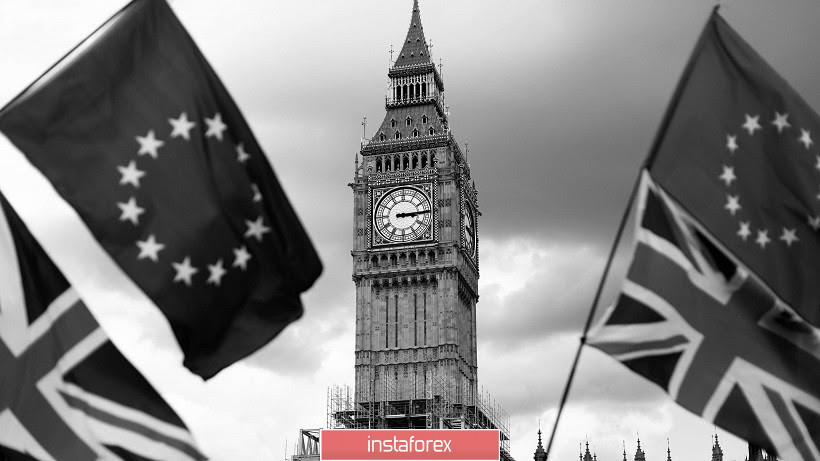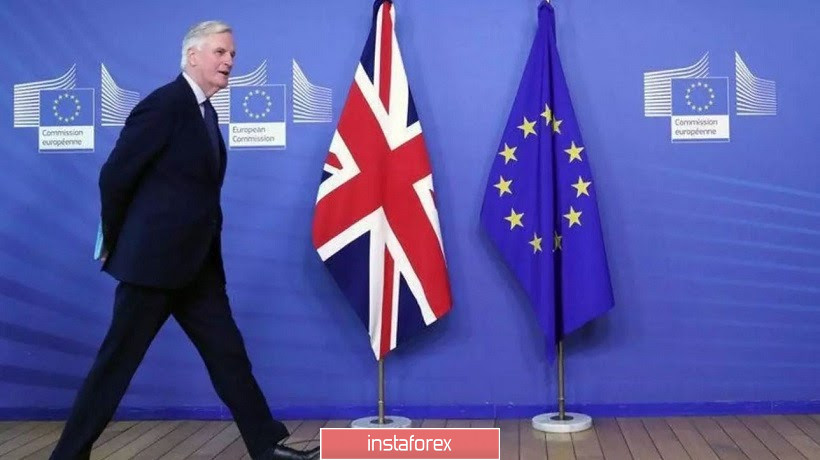The pound-dollar pair tested the 25th figure today, reacting to the general weakening of the US dollar. The PMI index for the construction sector provided additional support for the British currency, which came out much better than forecast values. But in general, the fundamental background for GBP/USD has not changed: the pound is still under the background pressure of Brexit, so it is still advisable to use rare northern "arches" to open short positions. But longs look quite risky, given the results of the previous round of negotiations between representatives of London and Brussels.

Let me remind you that at the end of last week, the parties parted early in the corners of the ring, refusing to hold the final meeting on Friday. The main (but not the only) differences between the negotiators arose in the field of fishing. Britain considers the EU's demand of providing European fisherman access to British fishing areas as unacceptable. According to London, such requirements are incompatible with the future status of the UK as an independent coastal state. The British want an annual review of the "admission" issue of European fishermen, but France strongly opposed such a proposal. In addition to this issue, the parties also failed to agree even on the outlines of common competition rules for business. As it turned out, negotiators interpret this term differently. According to the European Union, London's proposals put British businesses in a privileged position relative to the companies of the other members of the bloc; in turn, the British insist on their proposals, considering them fair.
On the other positions, the same differences remained – according to the negotiators themselves, the parties were not able to come one iota closer to a common denominator on key issues. Actually, for this reason, the negotiations were interrupted.
The dialogue between London and Brussels resumed today: the chief negotiator from the European Union, Michel Barnier, arrived in the British capital to take part in the next round of negotiations. They should last until the end of this week, but given the experience of the previous round, the negotiation process may be interrupted ahead of schedule. Although most experts and traders have no illusions about the current negotiations, the fact of another failure will put quite a lot of pressure on the British currency.
According to the British press, in mid-or late July (that is, before or after the EU summit), British Prime Minister Boris Johnson will visit Brussels for face-to-face and personal talks with EU leaders and the EU leadership. This step can hypothetically move the situation from a dead point. Last year, it was the personal meetings of the head of the British Parliament that decided the fate of Brexit. In this context, we can say only one thing with confidence - before the face-to-face meeting of the leaders takes place, the parties will zealously defend their positions, expressing principles and demonstrating intransigence. It is obvious that if the negotiators are too flexible until then, they will weaken the negotiating positions of their patrons. Therefore, it is highly likely that the current negotiations will share the fate of the previous ones – that is, they will end in failure.

The situation is being escalated partly artificially, as it was done last year. For the same reason, Johnson stated his categorical disagreement with the extension of the transition period. According to the laws of the genre, the overall situation around Brexit will heat up to its limit – Johnson is preparing a comfortable (for himself) ground for key negotiations. This can also include talk about the implementation of the Australian scenario (Canberra did not enter into a single trade agreement with Brussels, so the exchange of goods takes place mainly under the rules of the World Trade Organization). All these messages with which London fills the information space serve as preparation for the main battle on the negotiating front. At least, this scenario was implemented last year, and Johnson is undertaking similar political maneuvers this year.
Thus, the current negotiations will probably end without result. Such news always puts downward pressure on the GBP/USD pair – regardless of the dollar's health. Therefore, in my opinion, sales are still relevant for the pair, despite the impulsive corrective growth at the beginning of the trading week.
From the technical point of view, the price on the daily chart is located on the middle line of the Bollinger Bands indicator, and the trend indicators have not formed any clear and unambiguous signals. If the pair does not break the 1.2500 mark (and most importantly – does not gain a foothold over it), this will also indicate the priority of the downward direction. In this case, you can consider short positions with the first goal of 1.2360 (the upper limit of the Kumo cloud on D1) and the main goal of 1.2260 (a five-week price low that coincides with the lower line of the Bollinger Bands on the same timeframe).





















